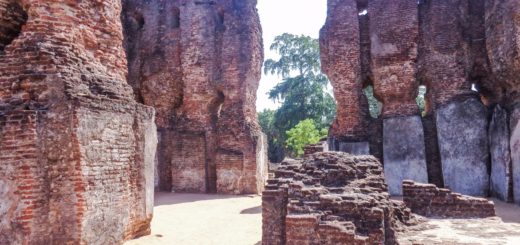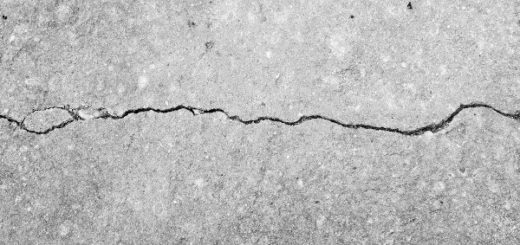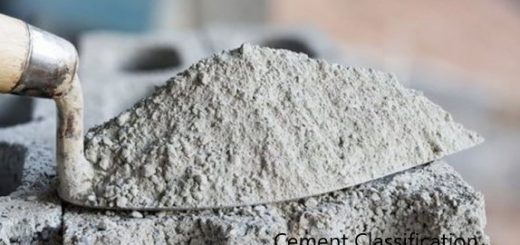Manufactured Sand for Construction
Manufactured sand (M-Sand) is used as a substitution to the river sand in construction. River sand is becoming a decaying resource in some parts of the year due to the lack of rains to collect the sand on the river beds.
Manufactured sand can be considered as a by-product of the process of producing coarse aggregates. When the rock is crushed into small particles, fine aggregates are produced.
Due to the increasing demand in the construction sector, there is a difficulty in supplying the rever sand continuously to meet the demand.
Today, the construction is faster than the paster than the future, therefore, the crushed fine aggregate (M-sand) used as an alternative to the river sand.
Can we use Manufactured Sand for Construction?
The answer is yes. However, there are some constraints to be attended when M-Sand is used for construction.
Further, manufactured sand is used as a full replacement to the fine aggregates or partial replacement.
The gradation or the particle size distribution, mica content, etc should be checked before using them.
The content of the mica greater than 5% causes loss of compressive strength of the concrete. Therefore, it shall be studied carefully when aggregate containing mica is used for construction.
Different standards provide a similar range of gradation for selecting the manufactured sand.
If we test them as per the ASTM standard, following the distribution of particles can be considered.
ASTM C33/C33M-13 provides the above percentages of passings to define the gradation curve of the crushed rock fine aggregates.
Further, the BS 882 also provides the specification to select the fine aggregates.
Any of the guidelines could be followed to fix the gradate of the manufactured sand.
The attention shall be made on the gradation of the M-sand as it could vary always. Therefore, testing shall be done continuously.
Why Should We Use Manufactured Sand?
Let’s discuss key factors that promote the use of M-Sand.
- Material Shortage
Continuous use of the sand has led to the end of the available resources. Further, mostly the sand is taken from the revers. Lack of rains has caused less generation of sand.
- Increasing Demand
Due to the development of the construction sector and with the rapid rate of growth, there is a higher demand for the aggregates. It has become impossible to supply the materials for such demand.
- Difficulty in Transportation
Mostly the sand will be taken from far away from the construction sites, they need to transport to the sites. With traffic congestions, it is very difficult to transport them.
- Laws
There are laws against transportation and acquiring of the sand from the rivers.
- Impurities in the Sand
Impurities such as silt and clay may be contained in the sand. The effects on the strength of the concrete.
- Illegal Production
Some people produce sand by washing the sandy clay. These types of sand have more impurities such as mud around the particles which does not allow bonding with cement. It could cause a significant loss in the strength of the concrete.
- By Product
M-sand is a by-product of the aggregate production. When there are small quantities required, the produced sand with the production of coarse aggregate can be used.
Advantages of Manufactured Sand
- Less Cost: Manufactured sand is less costly compared with the river sand. It adds a greater economy to the construction.
- Consistent Supply: Manufactured sand can be supplied continuously without any difficulty to meet the construction demand.
- Impurities: M-sand has lesser impurities. it does not include materials such as silt, clay, etc. and it provides better performance. Further, it does not include organic and soluble compounds that affect the setting time and properties of cement. Usually, concrete strength is not affected by impurities.
- High Strength of Concrete: As per the different studies carried out by researches, it can be considered the manufactured sand as a replacement(fully or partially) replacement to the river sand. Based on the studies, the users of the manufactured sand increase the compressive strength of the concrete. Further, some of the studies show that adding 50% of the M-sand gives better results than full replacement of the river sand.
- High Split Strength
- High Flexural Strength
- Good Abrasion Resistance
- Durability of Concrete: Manufactured sand has lesser impurities when compared with the river sand. There is no silt or clay in the M-Sand. Further, its chemical composition is also balanced as they are taken from the good rock. Concrete made with M-sand can withstand severe environmental conditions. Further, it reduces the corrosion of reinforcement and permeability. In general, it has good resistance to factors affecting durability of concrete.
- Workability of Concrete: As per the studies, workability of concrete increases with the use of manufactured sand.
- Construction Defects: It has lesser construction defects such as the formation of honeycombs, segregation, bleeding, etc.
- Eco Friendly: M-sand is an eco-friendly material that does not have much harm compared with the river sand. Deep excavations some time cause damage to bridge piers, dames, etc. River sand creates more environmental and social issues. Further, an increase of erosion, destroy the flora and fauna, damage to the roads due to transportation of sand, diminishing of natural rivers and river beds, etc also severe issues caused by the use of river sand.
Disadvantages of Manufactured Sand
- Continuous and Consistent Testing: It is required to test regularly to make sure the consistency of the manufactured sand.
- Presence of Impurities: Impurities such as coal, bones, shells, mica, etc could be in the M-sand. Decaying of these materials with the time could reduce the strength of the concrete.
- Environmental Impact: Production of the M-sand causes environmental issues. Vibrations cause due to the blasting damage the building in the surrounding areas. The dust spread around the environment causes severe environmental and social issues.
- Large Volume of Fines: M-Sand contained a large amount of micro-fine particles than the river sand. They could affect the workability of concrete and the strength of the concrete.





